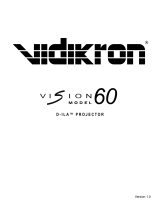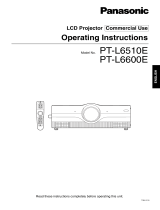
ENGLISH – 3
Getting StartedGetting Started
Basic OperationSpecial FeaturesInformation
Contents
IMPORTANT SAFETY NOTICE ............................................................................................. 4
Precautions with regard to safety ........................................................................................ 6
Before Using ........................................................................................................................ 10
Location and function of each part .................................................................................... 12
Using the remote control unit ............................................................................................ 17
Installation ............................................................................................................................ 19
Connection ........................................................................................................................... 24
Installation of input module (optional) .............................................................................. 27
How to install and remove the projection lens (optional) ................................................ 33
Projection ............................................................................................................................. 34
How to adjust the lens ........................................................................................................ 37
Automatic adjustment (AUTO SETUP) .............................................................................. 39
Registration of input signal data ........................................................................................ 40
Basic operations using the remote control ...................................................................... 43
On-screen menus ................................................................................................................46
Adjusting the picture ........................................................................................................... 49
Adjusting the position ......................................................................................................... 56
How to use ADVANCED MENU .......................................................................................... 60
Setting the DISPLAY LANGUAGE ...................................................................................... 66
Option1 settings .................................................................................................................. 67
Option2 settings .................................................................................................................. 75
Displaying the internal test pattern ................................................................................... 83
How to use network function ............................................................................................. 84
Using the PJLink™ protocol .............................................................................................. 98
Setting the security ............................................................................................................. 99
Using the serial terminals ................................................................................................. 102
Using the Remote 2 terminal ............................................................................................ 106
Indication of monitor lamp ............................................................................................... 107
Cleaning and replacement of air filter ............................................................................. 108
Replacement of lamp unit ................................................................................................. 110
Notes when installing the ceiling mount bracket ........................................................... 112
Before asking for service
… try to check the following points again. ........................................... 113
Self-diagnosis display....................................................................................................... 114
Specifications .................................................................................................................... 116
Appendix ............................................................................................................................ 118
Dimensions ........................................................................................................................ 120
Index ................................................................................................................................... 121
Français Information ......................................................................................................... 123
Be sure to read the “IMPORTANT SAFETY NOTICE” and
the “Precautions with regard to safety”. (pp. 4-9)





















